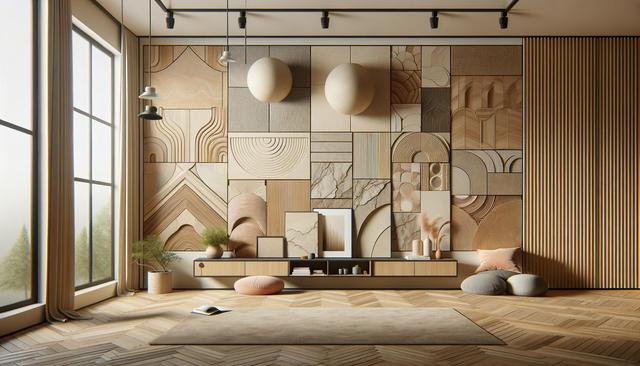Why Choose Faux Stone Panels for Your Walls?
Faux stone panels offer a stylish and practical alternative to traditional stone masonry. Whether you’re renovating a living room, upgrading a retail space, or enhancing a garden wall, these panels provide a visually appealing solution that mimics the texture and depth of real stone—without the weight, cost, or installation complexity. One of the main reasons homeowners and contractors choose faux stone is the ease of handling. These panels are crafted from polyurethane or similar lightweight materials, making them simple to cut and install with standard tools. This convenience can significantly reduce labor costs and project timelines.
Another key advantage is the consistent appearance. Unlike natural stone, which can vary in color and shape, faux panels are manufactured to have uniformity, allowing for a seamless finish across large surfaces. This makes them ideal for both interior and exterior applications where visual consistency is important. If you’re wondering, “What are the benefits of faux stone panels?”—they include reduced maintenance, lower cost, and versatility in design, among others.
Durability That Stands the Test of Time
Though they’re not made from real stone, faux stone panels are designed to be tough. Many are UV-resistant and moisture-resistant, which makes them an excellent choice for areas exposed to the elements. They don’t crack, chip, or fade easily, even when used outdoors. In fact, the question “Can faux stone panels be used outdoors?” often comes up, and the answer is yes—they are well-suited for exterior applications like outdoor kitchens, garden walls, and building facades.
Here are some of the ways faux stone panels can outperform traditional materials in certain environments:
- They don’t absorb water like natural stone, reducing the risk of mold or mildew.
- They are less prone to damage from freeze-thaw cycles.
- They require little to no sealing or special treatment over time.
These attributes make faux stone panels a practical option for those seeking long-term resilience without the maintenance demands of natural stone.
Cost Considerations and Budget-Friendly Appeal
One of the most commonly asked questions is, “How much do faux stone panels cost per square foot?” Prices can vary depending on the manufacturer and style, but generally, faux stone panels range from $6 to $12 per square foot. This is significantly more affordable than natural stone, which can cost anywhere from $20 to $30 per square foot, not including the added expense of installation. By choosing faux stone, you can achieve a high-end look while keeping your budget in check.
In addition to the lower material cost, installation savings also play a major role in the overall affordability. Since these panels are designed for easy installation, many homeowners can take on the project themselves, eliminating the need for professional labor. Even when hiring a contractor, the reduced time and complexity of the job can result in substantial savings.
Design Flexibility for Every Space
Faux stone panels come in a variety of colors, patterns, and textures, allowing for a high degree of customization. Whether you’re aiming for a rustic, modern, or classic aesthetic, there’s likely a faux stone option that fits your vision. These panels can be used in various settings, including:
- Living rooms and fireplaces
- Kitchen backsplashes
- Entryways and accent walls
- Outdoor patios and pillars
- Retail displays and commercial interiors
This versatility makes them a favorite among designers and DIY enthusiasts alike. They can be painted or stained to match existing decor, and their modular design allows for creative layouts that natural stone might not accommodate as easily.
Moreover, faux stone panels are often more compatible with modern building codes and insulation requirements, making them a smart choice for energy-efficient construction projects.
Installation: A Simpler Process from Start to Finish
Unlike traditional stone, which requires time-consuming masonry work, faux stone panels can be installed using simple tools like screws, adhesive, and a level. This user-friendly approach appeals to both DIYers and professionals looking for an efficient solution. Most panels come with interlocking edges, which help create a seamless look without visible joints or gaps.
Here’s a basic overview of the installation steps:
- Prepare the surface by cleaning and leveling it.
- Measure and cut the panels to fit the space.
- Apply construction adhesive to the back of each panel.
- Secure panels to the wall with screws or nails.
- Fill in any joints or gaps with color-matched caulk if needed.
This streamlined process reduces the need for specialized labor and can often be completed over a weekend, depending on the size of the project. Plus, manufacturers typically provide detailed instructions and support, making the learning curve manageable.
Conclusion: A Smart and Stylish Alternative
Faux stone panels offer a practical and visually appealing solution for those who want the charm of stone without the complications. Whether you’re working on a residential or commercial project, their ease of use, durability, and cost-effectiveness make them a worthwhile consideration. From answering common questions like “What are the benefits of faux stone panels?” to addressing concerns such as “Can faux stone panels be used outdoors?” and “How much do faux stone panels cost per square foot?”, it’s clear that this material offers a strong balance of aesthetics and functionality. For anyone looking to upgrade their space with a stone-like finish, faux stone panels provide a reliable and stylish choice.




Leave a Reply